Little Richard - I Don't Know What You've Got (But It's Got Me) Part ll (Vee Jay 698)

I Don't Know What You've Got (But It's Got Me) Part ll
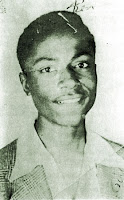 Richard W. Penniman grew up in Macon, Georgia singing Gospel with his brothers and sisters in a group called The Penniman Singers. Although the family was religious, his father sold bootleg whiskey and ran a nightclub, maintaining a delicate balance between the sacred and the profane that would stay with Richard for the rest of his life.
Richard W. Penniman grew up in Macon, Georgia singing Gospel with his brothers and sisters in a group called The Penniman Singers. Although the family was religious, his father sold bootleg whiskey and ran a nightclub, maintaining a delicate balance between the sacred and the profane that would stay with Richard for the rest of his life.The South he grew up in was totally segregated and, despite their inherent poverty, the black community developed a culture and language all their own. The depth of the black experience was reflected in the rich tradition of Gospel music that seemed to pour out of the churches and on to the streets. Young Richard was impressed by the power behind people like Brother Joe May and Sister Rosetta Tharpe, and when Sister Tharpe invited him up on stage to sing with her at the Macon Auditorium, he was hooked.
 It was also a South of hucksters and 'flim-flam men', colorful itinerant characters that fed off of people's dreams and superstitions. Richard was fascinated by all of this, and left town with a 'snake oil' salesman named Doc Hudson when he was sixteen years old. Traveling the same circuit as the burgeoning postwar R&B scene, he was soon picked up as the lead vocalist for B. Brown's Orchestra, who christened him 'Little Richard'. Life on the road appealed to him, and he began working in various traveling Minstel Shows with names like Sugarfoot Sam from Alabam' and The Tidy Jolly Steppers.
It was also a South of hucksters and 'flim-flam men', colorful itinerant characters that fed off of people's dreams and superstitions. Richard was fascinated by all of this, and left town with a 'snake oil' salesman named Doc Hudson when he was sixteen years old. Traveling the same circuit as the burgeoning postwar R&B scene, he was soon picked up as the lead vocalist for B. Brown's Orchestra, who christened him 'Little Richard'. Life on the road appealed to him, and he began working in various traveling Minstel Shows with names like Sugarfoot Sam from Alabam' and The Tidy Jolly Steppers. He gravitated towards Atlanta, becoming a member of the Broadway Follies, and performing regularly with some of the great names in R&B. His favorite, by far, was local luminary Billy Wright. Known as 'The Prince Of The Blues', Wright was a regular visitor to the R&B top ten in the late forties and early fifties and, in Richard's own words, "He really enthused my whole life. I thought he was the most fantastic entertainer I had ever seen." Wright performed in heavy make-up, and wore his hair high in a wavy pompadour. Richard ate it up.
He gravitated towards Atlanta, becoming a member of the Broadway Follies, and performing regularly with some of the great names in R&B. His favorite, by far, was local luminary Billy Wright. Known as 'The Prince Of The Blues', Wright was a regular visitor to the R&B top ten in the late forties and early fifties and, in Richard's own words, "He really enthused my whole life. I thought he was the most fantastic entertainer I had ever seen." Wright performed in heavy make-up, and wore his hair high in a wavy pompadour. Richard ate it up. Becoming a member of a loosely-knit gay community that had grown up out of the cross-dressing female impersonating tradition of the minstrel shows, he soon became friends with the legendary S.Q. Reeder (aka Esquerita), who taught him how to play the piano. When Billy Wright brought him to the attention of prominent Atlanta dee-jay Zenas Sears, he recorded a few sides on Richard, and got him a contract with RCA in 1951. One of those records, Every Hour, became a local hit, and Richard returned to Macon a home-town hero.
Becoming a member of a loosely-knit gay community that had grown up out of the cross-dressing female impersonating tradition of the minstrel shows, he soon became friends with the legendary S.Q. Reeder (aka Esquerita), who taught him how to play the piano. When Billy Wright brought him to the attention of prominent Atlanta dee-jay Zenas Sears, he recorded a few sides on Richard, and got him a contract with RCA in 1951. One of those records, Every Hour, became a local hit, and Richard returned to Macon a home-town hero.After a second Atlanta session in 1952 failed to make much noise, Richard began singing weekends with the Percy Heath Orchestra, while washing dishes at the Greyhound Bus Terminal in Macon to help feed his family. Local promoter Clint Brantley convinced him to start his own band, The Tempo Toppers, and got him work out on the circuit. Over the next few years, Richard made a name for himself, holding down engagements at fabled nightspots like The Dew Drop Inn and The Club Tijuana in New Orleans, and the Club Matinee in Houston. He signed with Don Robey's Peacock label, but things soon came to a head, with Robey actually beating the independent-minded Richard up and throwing him out of his office!
 It was Lloyd Price that suggested that Richard send off a demo tape to Specialty Records. Although it took a while, they finally got back to him and arranged for him to meet their producer and A&R man, Bumps Blackwell, at Cosimo's studio in New Orleans in October of 1955. After recording a few underwhelming slow blues numbers with the house band, Bumps called a break and took everybody over to the Dew Drop for lunch. Ever the entertainer, Richard got up on stage and ripped into a bawdy up-tempo number that he'd been including in his act for years. Blackwell was floored, and grabbed local songwriter Dorothy LaBostrie to clean up the explicitly sexual lyrics so he could rush everyone back to the studio and record what he just knew would be a hit record.
It was Lloyd Price that suggested that Richard send off a demo tape to Specialty Records. Although it took a while, they finally got back to him and arranged for him to meet their producer and A&R man, Bumps Blackwell, at Cosimo's studio in New Orleans in October of 1955. After recording a few underwhelming slow blues numbers with the house band, Bumps called a break and took everybody over to the Dew Drop for lunch. Ever the entertainer, Richard got up on stage and ripped into a bawdy up-tempo number that he'd been including in his act for years. Blackwell was floored, and grabbed local songwriter Dorothy LaBostrie to clean up the explicitly sexual lyrics so he could rush everyone back to the studio and record what he just knew would be a hit record.It was so much more than that.
 More than any other single recording that I can think of, Tutti Frutti just changed everything. Richard's high energy piano and vocals backed by the white heat generated by Earl Palmer, Lee Allen, and Red Tyler somehow took everything that came before it and crystallized it into a whole new art form that shook the music industry to its roots. As it settled in for its six week stay at #2 on the R&B charts (only kept from the #1 slot by Priscilla Bowman and Jay McShann's smash Hands Off), Dot Records rushed out a cover version by Pat Boone that racist radio programmers plugged until it surpassed Richard's original version on the Pop charts in early 1956. When they tried the same thing with the follow-up record, Long Tall Sally, Boone's version finished a distant second to Richard's top ten smash.
More than any other single recording that I can think of, Tutti Frutti just changed everything. Richard's high energy piano and vocals backed by the white heat generated by Earl Palmer, Lee Allen, and Red Tyler somehow took everything that came before it and crystallized it into a whole new art form that shook the music industry to its roots. As it settled in for its six week stay at #2 on the R&B charts (only kept from the #1 slot by Priscilla Bowman and Jay McShann's smash Hands Off), Dot Records rushed out a cover version by Pat Boone that racist radio programmers plugged until it surpassed Richard's original version on the Pop charts in early 1956. When they tried the same thing with the follow-up record, Long Tall Sally, Boone's version finished a distant second to Richard's top ten smash. With his new band, The Upsetters, Little Richard was wreaking havoc wherever he went, integrating sold out houses throughout the South through the sheer power of his personality. He was, truly, the first real rock and roll star. Before long he was headlining Alan Freed's package shows, as there was literally no one that could follow him. He continued to dominate the charts, as Specialty released one great record after another, with even the B sides (like Slippin' And Slidin', Ready Teddy, and She's Got It) cracking the R&B top ten on their own.
With his new band, The Upsetters, Little Richard was wreaking havoc wherever he went, integrating sold out houses throughout the South through the sheer power of his personality. He was, truly, the first real rock and roll star. Before long he was headlining Alan Freed's package shows, as there was literally no one that could follow him. He continued to dominate the charts, as Specialty released one great record after another, with even the B sides (like Slippin' And Slidin', Ready Teddy, and She's Got It) cracking the R&B top ten on their own. Before long, Hollywood wanted to get in on the act, and Richard had appeared in three movies by the end of 1956, most notably in The Girl Can't Help It with Jayne Mansfield, for which he performed the title song. Literally at the top of the heap, Little Richard and the Upsetters continued to tour the country, setting attendance records wherever they went. It was at one such swing through Washington DC that a local singer and songwriter named Don Covay would join his entourage as a valet and driver. Richard would nickname him 'Pretty Boy', and he became a part of his 'traveling circus'.
Before long, Hollywood wanted to get in on the act, and Richard had appeared in three movies by the end of 1956, most notably in The Girl Can't Help It with Jayne Mansfield, for which he performed the title song. Literally at the top of the heap, Little Richard and the Upsetters continued to tour the country, setting attendance records wherever they went. It was at one such swing through Washington DC that a local singer and songwriter named Don Covay would join his entourage as a valet and driver. Richard would nickname him 'Pretty Boy', and he became a part of his 'traveling circus'. Richard had begun to have doubts about the fast life he was leading, and had been speaking with fellow musician Joe Lutcher about leaving it all behind and joining the ministry as Lutcher had done a few years before. On a tour of Australia in late 1957 (with Gene Vincent and Eddie Cochran), Richard had what amounted to a vision, and decided to walk away from it all with ten dates still left to play. By the time he returned to the States, the papers were full of all kinds of exaggerated versions of the story. Little Richard agreed to play one more previously booked date at the Apollo, which Alan Freed was now able to bill as his farewell performance. The crowd went nuts.
Richard had begun to have doubts about the fast life he was leading, and had been speaking with fellow musician Joe Lutcher about leaving it all behind and joining the ministry as Lutcher had done a few years before. On a tour of Australia in late 1957 (with Gene Vincent and Eddie Cochran), Richard had what amounted to a vision, and decided to walk away from it all with ten dates still left to play. By the time he returned to the States, the papers were full of all kinds of exaggerated versions of the story. Little Richard agreed to play one more previously booked date at the Apollo, which Alan Freed was now able to bill as his farewell performance. The crowd went nuts. Richard took his new found faith seriously, and entered a 'Bible College' in Alabama. He and Joe Lutcher began traveling as The Little Richard Evangelistic Team, and preaching the word of God to enthusiastic crowds across the country. Specialty began to release some material it had 'in the can', and Richard continued to chart regularly in 1958, even though he was no longer recording.
Richard took his new found faith seriously, and entered a 'Bible College' in Alabama. He and Joe Lutcher began traveling as The Little Richard Evangelistic Team, and preaching the word of God to enthusiastic crowds across the country. Specialty began to release some material it had 'in the can', and Richard continued to chart regularly in 1958, even though he was no longer recording. By 1960, he had hooked up with George Goldner, and cut some Gospel sides for his End label. Bumps Blackwell, meanwhile, was now working A&R for Mercury, and produced an album called Little Richard - King Of The Gospel Singers with Quincy Jones providing the arrangements. Mercury released a few singles from the album but they, predictably, didn't sell. Richard's old habits had begun to resurface at this point, and he soon found himself at odds with the religious establishment.
By 1960, he had hooked up with George Goldner, and cut some Gospel sides for his End label. Bumps Blackwell, meanwhile, was now working A&R for Mercury, and produced an album called Little Richard - King Of The Gospel Singers with Quincy Jones providing the arrangements. Mercury released a few singles from the album but they, predictably, didn't sell. Richard's old habits had begun to resurface at this point, and he soon found himself at odds with the religious establishment. In 1962, Richard was approached by a British promoter named Don Arden. He persuaded him to come to England as part of a package tour that would also include Sam Cooke. Whether or not Richard had agreed to perform his secular music in advance is a matter of speculation, but the fact remains that Arden billed it that way, promising Richard's return to the rock & roll stage.
In 1962, Richard was approached by a British promoter named Don Arden. He persuaded him to come to England as part of a package tour that would also include Sam Cooke. Whether or not Richard had agreed to perform his secular music in advance is a matter of speculation, but the fact remains that Arden billed it that way, promising Richard's return to the rock & roll stage. He brought with him a fifteen year old organist he had met through Mahalia Jackson and the Los Angeles Gospel community, Billy Preston. As far as Billy knew, he was going to be playing Gospel. When Cooke's plane arrived late for the first show of the tour, Richard went out and performed some of his low key sanctified numbers like I Believe and He Got What He Wanted (But He Lost What He Had), before 'phoning in' a perfunctory medley of his biggest hits. The crowd, and Don Arden, were not happy campers. When Sam finally arrived, Arden pleaded with him and J.W. Alexander to convince Richard to get out there and do the right thing. Alexander, a veteran of the 'Gospel Highway', knew Richard from his days at Specialty, and assured Arden that once Richard saw Sam just 'killing' the crowd, there was no way he was going to let him get away with it... that Richard's competitive nature would force him to do his best to win the audience back.
He brought with him a fifteen year old organist he had met through Mahalia Jackson and the Los Angeles Gospel community, Billy Preston. As far as Billy knew, he was going to be playing Gospel. When Cooke's plane arrived late for the first show of the tour, Richard went out and performed some of his low key sanctified numbers like I Believe and He Got What He Wanted (But He Lost What He Had), before 'phoning in' a perfunctory medley of his biggest hits. The crowd, and Don Arden, were not happy campers. When Sam finally arrived, Arden pleaded with him and J.W. Alexander to convince Richard to get out there and do the right thing. Alexander, a veteran of the 'Gospel Highway', knew Richard from his days at Specialty, and assured Arden that once Richard saw Sam just 'killing' the crowd, there was no way he was going to let him get away with it... that Richard's competitive nature would force him to do his best to win the audience back. That is exactly what happened. Little Richard went out there night after night and just slayed 'em, pulling out all the stops until the crowd knew it was in the presence of greatness. The tour was extended to include a stint at the Star Club in Hamburg, Germany where a young group of British lads was just learning the ropes. They fawned over him, learning about rock & roll from the man who invented it. Within about a year, those same kids would dominate the American pop charts, and the 'British Invasion' had begun. Their second album introduced Long Tall Sally to a whole new generation of white American kids (like me) who remained totally unaware of the song's origins.
That is exactly what happened. Little Richard went out there night after night and just slayed 'em, pulling out all the stops until the crowd knew it was in the presence of greatness. The tour was extended to include a stint at the Star Club in Hamburg, Germany where a young group of British lads was just learning the ropes. They fawned over him, learning about rock & roll from the man who invented it. Within about a year, those same kids would dominate the American pop charts, and the 'British Invasion' had begun. Their second album introduced Long Tall Sally to a whole new generation of white American kids (like me) who remained totally unaware of the song's origins. Richard, meanwhile, signed a one record deal with his old boss Art Rupe at Specialty, producing a single cut from the old mold, Bama Lama Bama Loo which crawled to #82 on the R&B charts in the summer of 1964. Looking around him, he could sense how R&B had been transformed into Soul in his absence, and he set out to show everybody that he had plenty of it. Signing with Vee-Jay later that year, he re-recorded a number of his old hits for the label before waxing our current selection in early 1965.
Richard, meanwhile, signed a one record deal with his old boss Art Rupe at Specialty, producing a single cut from the old mold, Bama Lama Bama Loo which crawled to #82 on the R&B charts in the summer of 1964. Looking around him, he could sense how R&B had been transformed into Soul in his absence, and he set out to show everybody that he had plenty of it. Signing with Vee-Jay later that year, he re-recorded a number of his old hits for the label before waxing our current selection in early 1965. Truly a great soul record, it was written by his old pal Don Covay, who I believe is singing that falsetto second vocal. The A side of the single (Part l) would spend eight weeks on the R&B charts in the fall of 1965, climbing to #12 and proving that Richard could get out there and emote with the best of 'em! (Covay's own See-Saw would ride to #5 during the same time frame.) A young guitar player that called himself Maurice James was passing through Richard's band at the time, and that's him playing those little frills in the background. He would go on, of course, to become known as Jimi Hendrix, and use that same guitar pattern on songs like One Rainy Wish a few years later. In 1966, Hendrix told a reporter "I want to do with my guitar what Little Richard does with his voice." Cool.
Truly a great soul record, it was written by his old pal Don Covay, who I believe is singing that falsetto second vocal. The A side of the single (Part l) would spend eight weeks on the R&B charts in the fall of 1965, climbing to #12 and proving that Richard could get out there and emote with the best of 'em! (Covay's own See-Saw would ride to #5 during the same time frame.) A young guitar player that called himself Maurice James was passing through Richard's band at the time, and that's him playing those little frills in the background. He would go on, of course, to become known as Jimi Hendrix, and use that same guitar pattern on songs like One Rainy Wish a few years later. In 1966, Hendrix told a reporter "I want to do with my guitar what Little Richard does with his voice." Cool.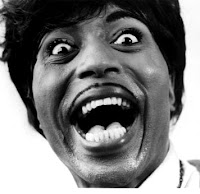 After Vee-Jay went bankrupt, Richard recorded a few unremarkable sides for Modern before teaming up with Johnny 'Guitar' Watson at Okeh to produce a number of great soul sides like Poor Dog (Who Can't Wag His Own Tail), which almost cracked the R&B top 40 in the summer of 1966. He moved on to Brunswick the following year, and songs like Try Some Of Mine showed he still had it goin' on.
After Vee-Jay went bankrupt, Richard recorded a few unremarkable sides for Modern before teaming up with Johnny 'Guitar' Watson at Okeh to produce a number of great soul sides like Poor Dog (Who Can't Wag His Own Tail), which almost cracked the R&B top 40 in the summer of 1966. He moved on to Brunswick the following year, and songs like Try Some Of Mine showed he still had it goin' on. By 1970, Little Richard was again selling out performances and headlining various 'rock & roll revivals', even making the cover of an upstart magazine called Rolling Stone. He found himself making regular appearances on TV variety shows hosted by people like Mike Douglas and Merv Griffin, and his unique and charismatic personality made him a fan favorite. He signed with Reprise Records, an arrangement which would produce his biggest hit in years, Freedom Blues. It would spend a month on the charts that summer, and he hit the road to promote the album it came from, The Rill Thing. He was back on top.
By 1970, Little Richard was again selling out performances and headlining various 'rock & roll revivals', even making the cover of an upstart magazine called Rolling Stone. He found himself making regular appearances on TV variety shows hosted by people like Mike Douglas and Merv Griffin, and his unique and charismatic personality made him a fan favorite. He signed with Reprise Records, an arrangement which would produce his biggest hit in years, Freedom Blues. It would spend a month on the charts that summer, and he hit the road to promote the album it came from, The Rill Thing. He was back on top. In 1973, he cut a couple of great Jimmy Holiday songs for a label called Greene Mountain and, although In The Middle Of The Night crept to #71 R&B, it was almost as if he had trouble being taken seriously as a soul performer, after billing himself in places like Vegas as the 'Bronze Liberace'. Just as had happened some twenty years before, his 'too much is not enough' lifestyle pushed him over the edge and back into the ministry. Taking up his cross, he became a salesman of the 'Black Heritage Bible', and preached his message wherever and whenever people would listen throughout the late seventies and early eighties.
In 1973, he cut a couple of great Jimmy Holiday songs for a label called Greene Mountain and, although In The Middle Of The Night crept to #71 R&B, it was almost as if he had trouble being taken seriously as a soul performer, after billing himself in places like Vegas as the 'Bronze Liberace'. Just as had happened some twenty years before, his 'too much is not enough' lifestyle pushed him over the edge and back into the ministry. Taking up his cross, he became a salesman of the 'Black Heritage Bible', and preached his message wherever and whenever people would listen throughout the late seventies and early eighties. The publication of Charles White's red hot biography The Life and Times of Little Richard - The Quasar of Rock in 1984 did much to bring him back into the public eye, a place he always secretly longed to be. His role in the 1986 film Down and Out in Beverly Hills helped propel a song he wrote for the film with old buddy Billy Preston, Great Gosh A'Mighty!, to #42 on the pop charts. He began performing again, and is still touring to this day.
The publication of Charles White's red hot biography The Life and Times of Little Richard - The Quasar of Rock in 1984 did much to bring him back into the public eye, a place he always secretly longed to be. His role in the 1986 film Down and Out in Beverly Hills helped propel a song he wrote for the film with old buddy Billy Preston, Great Gosh A'Mighty!, to #42 on the pop charts. He began performing again, and is still touring to this day. The past twenty years have seen him come to terms with the dualistic nature of his personality, and make peace with the idea of being an instantly recognizable Pop Icon and a true Christian at the same time. Appearances on Sesame Street, and a Disney album of children's songs brought him a whole new army of fans, and he became a household name once more. More recently, that awesome Geico commercial, in which he proclaims his love for 'mashed potatoes and gravy and cranberry sauce!', has made him a 'celebrity' to yet another generation.
The past twenty years have seen him come to terms with the dualistic nature of his personality, and make peace with the idea of being an instantly recognizable Pop Icon and a true Christian at the same time. Appearances on Sesame Street, and a Disney album of children's songs brought him a whole new army of fans, and he became a household name once more. More recently, that awesome Geico commercial, in which he proclaims his love for 'mashed potatoes and gravy and cranberry sauce!', has made him a 'celebrity' to yet another generation.A direct influence on everyone from Elvis and The Beatles to Otis Redding and James Brown, it's hard to think of a more important figure in American popular music.
Ooh! My Soul!

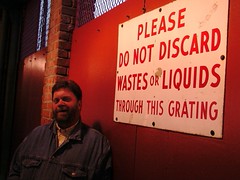





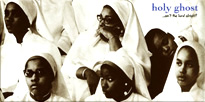
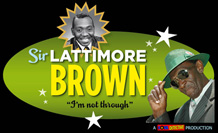






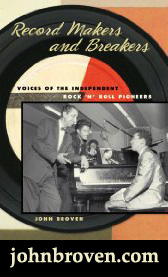


11 Comments:
Special thanks go out, once again, to Coffee Al and my kids for convincing me to write about Mister Penniman.
Kudos also to Charles White for writing such an excellent book!
As ever, thank you for an informative, well-written piece on one of the titans of American music, with terrific photographs to accompany it!
Truer words have never been spoken. Mr. Penniman is indeed one of the TRUE architects of Rock and Roll, Soul, Funk, you name it. Great post as always.
Many thanks for the great piece and excellent selection. About this song, Peter Guralnick's book "Sweet Soul Music" says: "Arguably equal to James Carr's 'The Dark End of the Street' as the greatest soul ballad of all time. ... The Mt. Rushmore of soul." Amen.
Lyle
Tremendous post!
A post worthy of your usual high standards - thanks!
BTW - I checked out The Soul Club from your gutter....thanks for that too!!!
a great post. Thanks for all your work.
A magnificent site.
Perhaps you might want to adjust the LR chart placements:
Poor Dog - just missed the Top 40 R & B in Billboard
Bama Lama Loo - made the Top 20 in the U.K. in 1964
He Got What He Wanted - made te Top 40 in the U.K. in 1962
Do You Feel It? (The Second Line) -made the Top 30 on Black Singles list for Cash Box in 1966.
His live album for '67 [at the Club Okeh] made the Top 30 of Black albums for Billboard.
prime
This is a great and informitive article I can not wait to read the book about his life. Job well done!
After reading Little Richard's book, I can truly say that I felt very line and phrase. Though he went rags to riches more than twice, he has amazingly carried GOD in his soul. I've gain so much love and respect for him. I have truly fell in love with Little Richard through the spirit of GOD. Amazing life for an Amazing man.
Hi!
Great post on Little Richard, G-R-E-A-T site on Black music. Thanks and keep up the good work
Xavier (France)
Post a Comment
<< Home